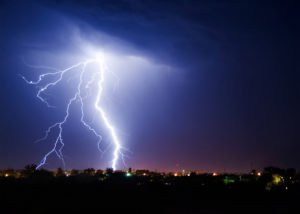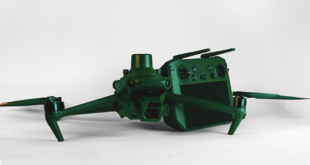 Earth Networks, the main supplier of climate intelligence options, desires to automate choices involving the climate – like whether or not or to not fly. Today at InterDrone, EarthNetworks launched Sferic DroneFlight – a brand new superior predictive climate providing for drone flights.
Earth Networks, the main supplier of climate intelligence options, desires to automate choices involving the climate – like whether or not or to not fly. Today at InterDrone, EarthNetworks launched Sferic DroneFlight – a brand new superior predictive climate providing for drone flights.
“As organizations move towards deploying drones for commercial applications ranging from delivery of goods to consumers to performing infrastructure inspections, one of the most significant challenges to emerge is the need for advanced weather data,” says the corporate. “Wind speed and direction data are particularly critical in the 10-400 foot low-altitude range where commercial drones operate – a range too high for traditional surface-level wind data to be used exclusively and too low for wind data utilized by airlines operating at much higher altitudes.”
Sferic DroneFlight delivers hyperlocal wind forecasts for any latitude and longitude on the earth. It’s a major profit for enterprise drone corporations in a variety of verticals. “It’s about flight planning and risk reduction,” says EarthNetworks’ CMO Anuj Agrawal. “The forecast, which is available at 10-meter altitude increments and hourly intervals for out to 6 days, lets enterprise customers plan flights in advance. If you’re working on an infrastructure project like a bridge inspection, its important to know that you won’t have to close it down for multiple days due to a weather delay.”
“But Sferic is also important for in-flight decisions,” explains Agrawal. “How do you know if it’s better to fly at 300 feet or 350 feet that day? How long will your battery last taking temperature into consideration?”
Weather is commonly an afterthought within the flight planning course of, attributable to an absence of specialised information. Operators routinely plan for a number of flights in case of climate points, losing time and sources. But Sferic has a formidable record of features to enhance the method:
- Optimize drone mission timing – wind forecasting is supplied for hourly time intervals, permitting drone missions to be deliberate for particular days and instances to find out optimum flying circumstances for capturing high-resolution imagery.
- Maximize drone flight length – With wind velocity and path forecasting, flight paths and elevation will be outlined to accommodate battery life and full missions inside a drone’s working capability.
- Extend geo-fencing for extreme climate – Drone missions require a capability to forecast climate with hyperlocal precision to find out the place extreme climate is happening so drones will be routed accordingly or grounded till the climate clears.
- Assess climate circumstances in non-connected areas – For missions in distant areas with restricted connectivity, using the 6-day hourly forecast supplies operators with climate data whereas touring to mission websites and for deliberate mission instances.
- Analyze the impression of climate – combining Sferic DroneFlight with historic climate datasets, corporations can combine climate data with captured imagery to know the causes of degradation or injury.
In International markets the place climate intelligence reminiscent of radar is commonly unavailable, Sferic DroneFlight enhances Earth Networks Dangerous Thunderstorm Alerts, a predictive convective storm algorithm powered by the corporate’s hyperlocal early warning networks of 10,000 climate sensors and 1,500 lightning sensors masking 90 international locations. Drone operators world wide can make the most of each options collectively to establish potential disruptive climate circumstances reminiscent of excessive winds, hail, and precipitation.
“As the drone market and regulatory environment continue to evolve, weather intelligence will be a key technology to enable longer and beyond line of sight missions,” says Agrawal. “We look forward to working with industry partners to bring continued innovation to market.”
 Unmanned Aerial Vehicle The latest drone news
Unmanned Aerial Vehicle The latest drone news




